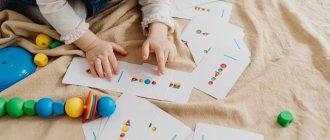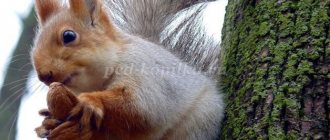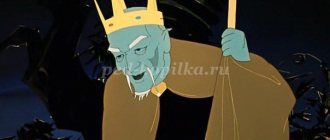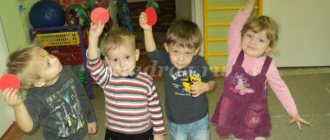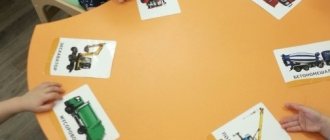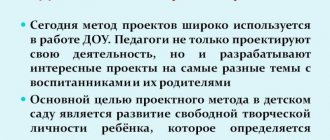Project for the nursery group “Hello, fairy tale!”
Project for a nursery group
"Hello, fairy tale!"
A fairy tale is a beautiful creation of art.
A child enters the world of fairy tales at a very early age, as soon as he begins to speak. There is a fairy tale in every home and is very popular among children. Children gain a lot of knowledge from fairy tales. Thanks to fairy tales, children develop the ability to empathize, have compassion and be happy for another; this is the only way to know the pain, joy, happiness and suffering of another person. And it is fairy tales that instill humanity in a child - a wonderful ability to sympathize with the misfortunes of others. The most amazing events, extraordinary transformations are common in fairy tales. Young children's perception of the world around them is varied. Children treat inanimate objects the same as animate ones, and vice versa, treat animate objects as if they were inanimate. In this special world, a child easily and simply masters the connections between phenomena and acquires a large stock of knowledge. A fairy tale for a child is a small life full of bright colors, miracles and adventures. Often a fairy tale contains songs and jokes, and children remember them first.
Today, fairy tales play a vital role in the development of a child’s imagination and instill a love for books in children. In our garden, many activities begin with entering a group of fairy-tale characters. Children play with them with pleasure, receiving a positive emotional mood, they learn the program better. Project “Hello, fairy tale!” We chose it because this topic is closest to our kids. Since many children do not have sufficient vocabulary and speak poorly, in the project we tried, with the help of fairy-tale characters, to activate speech and expand children’s knowledge about the world around them. The project is a daily change of fairy tale during the week. During the week we visited such fairy tales as: “Ryaba the Hen”, “Turnip”, “Masha and the Bear”, “Zayushkina’s Hut”, “Kolobok”.
Objective of the project:
To create conditions for the development of cognitive abilities and speech development of children in the process of implementing the project “Hello, Fairy Tale!”
Tasks:
1. Create the necessary conditions for introducing children to Russian folk tales. 2. Contribute to the creation of an emotionally positive climate in the group.3. Invite children to participate as much as possible in games and entertainment, imitating adults. 4. Strengthen children's interest in Russian folk tales. 5. Encourage children to make verbal statements.
.Project passport
Project type:
creative - playful.
Duration:
2 weeks
Children's age:
2-3 years
Participants:
pupils of the early age group, parents, teachers of children of the “Krepysh” group.
Form:
group.
Preparatory stage:
— Selection of methodological literature. — Preparation of materials for joint activities with children (colored paper, cardboard, glue, pencils, plasticine.) — Specially selected fairy tales for children of primary preschool age — Selection of audio recordings, illustrations for fairy tales. Expected result:
— Expansion and enrichment of children’s knowledge about the heroes of fairy tales — Development of children’s speech, enriching it with new words and expressions — Development of children’s creative abilities. — Activating the position of parents as participants in the pedagogical process of kindergarten.
Project activity product:
— Joint activity of the teacher and children: modeling “Plates for a Bear”, “Golden Eggs”, drawing “Path for a Kolobok”, applique “Turnip”
Project implementation
Formation of a holistic picture of the world
Looking at pictures from the series “Wild Animals”
Purpose: to practice recognizing and naming forest animals.
Watching the cartoon "Masha and the Bear"
Goal: to evoke a joyful mood, develop speech and vocabulary.
Conversation about the life of forest animals.
Goal: to tell about the habits of a fox and a hare (the fox is a predator - it hunts the bunny, he hides from her.)
Game-activity: Fairy tale “Ryaba Hen”
Goals: to encourage children to listen to the fairy tale in a dramatized version and in a regular retelling, to make them want to listen to it again. To develop the ability to generalize by exercising children in selecting corresponding nouns to verbs.
Fiction
Reading the poem by V. Berestov “Bear, bear, couch potato” Purpose: to introduce children to the poem by reading the text to them and looking at illustrations to the text, to attract children to repeat individual words and phrases from the text of the work; develop attention and memory; cultivate interest in fiction
Reading the fairy tale “Kolobok” with a tabletop theater show.
Goal: To develop the ability to understand simple plots of small fairy tales, to encourage repetition of the kolobok song.
Repetition of the nursery rhyme “Cockerel-cockerel”
Purpose: to practice pronouncing a familiar nursery rhyme.
Puppet theater show based on the fairy tale “Three Bears”
Goal: To teach children to listen to and understand a fairy tale with accessible content, to create a joyful mood in children when showing a theatrical fairy tale.
Demonstration of a table theater based on the fairy tale “Turnip”.
Goal: repeat a familiar fairy tale, encourage children to take an active part in the demonstration, repeating phrases after the teacher. Expand children’s orientation in their immediate environment, replenish their stock of understandable words and active vocabulary, and develop the need for verbal communication.
Didactic games
“Wonderful bag” “Vegetables”
Goal: To develop the ability to examine and compare vegetables, name them and determine their color.
“What grows in the garden?”
Goal: To expand children’s understanding of vegetables, their appearance and use, to develop speech by naming the vegetables shown in the picture.
“Early, early in the morning the cockerel cuckoo!”
Goals: Clarify with children the temporary concept of “morning”, develop imaginative thinking
Productive creative activity with a teacher
Modeling “Plates for bears”
Goal: to teach students to roll a ball of plasticine in a circular motion, and then press it with the palm of their hand and press from above to obtain a flattened shape.
Drawing with colored pencils “Path for Kolobok”
Goal: To teach children to hold a pencil correctly, to draw straight and winding lines
Application "Turnip"
Goal: to repeat with children the knowledge of yellow and green colors, learn to apply glue to prepared parts with a brush, glue them to a sheet of paper, connecting the parts according to the pattern.
Modeling on the theme: “The golden egg of the pockmarked hen.”
Goal: Continue to learn how to pinch off a small piece from a piece of plasticine and roll it into the shape of an egg in a circular motion.
Physical Culture
Outdoor games:
“By the Bear in the Forest”, “Bunnies”
Goal: to train children in imitation of the teacher while he performs movements according to the text.
"Wolf-Wolf"
Goal: to evoke a positive emotional mood in children, develop the ability to listen carefully to an adult, and act on a signal.
"Dog Bug."
Goal: Develop the ability to listen carefully to an adult and act on a signal.
“One, two, three - catch up with the bun!”
Goal: to develop the eye, the ability to navigate in space.
"The little gray bunny is sitting."
Goal: to develop motor activity, attention
“Catch the bunny.”
Goal: practice running after the teacher without bumping into each other.
“Where did the chicken hide the egg?”
Purpose: to practice orientation in the game room, to bring joy from group play.
“The chicken went out for a walk”
Purpose: to teach to perform actions on a signal, to navigate in space
Finger gymnastics “Once upon a time there were bunnies”, “A bunny is building a house”
Goals: To develop fine motor skills, auditory perception, to cultivate a sense of joy from communication in a joint game, to practice performing movements according to the text while pronouncing familiar words.
Music
Listening to the song “Kolobok” in audio recording.
Goal: to evoke a joyful mood, teach to understand the content of the song, and practice singing along with the teacher.
Parental Involvement
Exhibition of works by parents on the topic: “Cover of a favorite fairy tale” Goal: to attract parents to active joint activities to achieve positive results in the implementation of the project.
